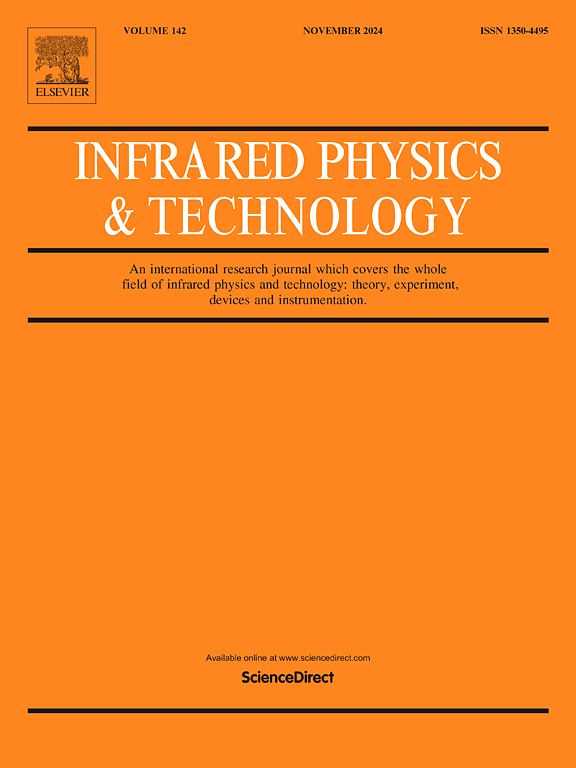太阳载荷红外热成像技术在活动艺术品无创检测中的应用:多元快速迭代滤波和多维快速迭代滤波对二维数据技术的贡献
IF 3.1
3区 物理与天体物理
Q2 INSTRUMENTS & INSTRUMENTATION
引用次数: 0
摘要
这项工作的重点是两种最新技术的应用,即多元快速迭代滤波(MvFIF)和二维数据的多维快速迭代滤波(FIF2),这两种技术已经证明了它们在所谓的太阳加载场景下获得的原始热图像的预处理阶段的能力,这些图像应用于可移动艺术(即古书和油画)。热成像采集在两天内持续了几个小时。一方面,天气预报受到高度重视,因为MvFIF和FIF2在信号振荡的情况下工作得很好,在我们的情况下,由风和/或阴影引起的。另一方面,太阳需要通过暴露在户外的被测样品(SUT)产生热传递。主成分热成像(PCT)对原始和预处理热图像的应用突出了MvFIF和FIF2在缺陷检测中的作用。本文强调了FIF2和MvFIF背后的数学部分,以及它们在热成像图像处理中应用的利弊。本文章由计算机程序翻译,如有差异,请以英文原文为准。
Solar loading infrared thermography method for the non-invasive inspection of movable arts: The contribution of Multivariate Fast Iterative Filtering and Multidimensional Fast Iterative Filtering for 2D data techniques
This work is focalized on the application of two recent techniques, i.e. Multivariate Fast Iterative Filtering (MvFIF) and Multidimensional Fast Iterative Filtering for 2D data (FIF2), that have demonstrated their ability in the pre-processing phase of raw thermal images acquired under the so-called solar loading scenario applied to movable arts (i.e., ancient books and paintings on canvas). The thermographic acquisitions lasted several hours during two separate days. On the one hand, weather forecasts were held in high regard because MvFIF and FIF2 work well in case of signal oscillations caused, in our case, by wind and/or shadows cast. On the other hand, the sun is needed to generate heat transfer through the samples under test (SUT) exposed outdoors. The application of principal component thermography (PCT) to raw and pre-processed thermal images highlights the contribution of MvFIF and FIF2 as a useful step in defect detection. The mathematical part behind FIF2 and MvFIF is underlined in the work, as well as pros and cons of their application in thermographic image processing.
求助全文
通过发布文献求助,成功后即可免费获取论文全文。
去求助
来源期刊
CiteScore
5.70
自引率
12.10%
发文量
400
审稿时长
67 days
期刊介绍:
The Journal covers the entire field of infrared physics and technology: theory, experiment, application, devices and instrumentation. Infrared'' is defined as covering the near, mid and far infrared (terahertz) regions from 0.75um (750nm) to 1mm (300GHz.) Submissions in the 300GHz to 100GHz region may be accepted at the editors discretion if their content is relevant to shorter wavelengths. Submissions must be primarily concerned with and directly relevant to this spectral region.
Its core topics can be summarized as the generation, propagation and detection, of infrared radiation; the associated optics, materials and devices; and its use in all fields of science, industry, engineering and medicine.
Infrared techniques occur in many different fields, notably spectroscopy and interferometry; material characterization and processing; atmospheric physics, astronomy and space research. Scientific aspects include lasers, quantum optics, quantum electronics, image processing and semiconductor physics. Some important applications are medical diagnostics and treatment, industrial inspection and environmental monitoring.

 求助内容:
求助内容: 应助结果提醒方式:
应助结果提醒方式:


